Understanding Rust on Cast Iron Cookware
Rust on cast iron is not uncommon—and not a reason to throw away your beloved skillet. It’s a chemical reaction where iron oxidizes when exposed to moisture and air, resulting in that flaky, orange surface layer.
While it may look alarming, in most cases, rust is completely reversible, especially if caught early. Whether you’re restoring a thrift-store find or saving your grandmother’s old skillet, understanding the type and extent of rust is the first step to reviving your cookware.
Is Rust on Cast Iron Dangerous?
Light surface rust is not harmful if properly cleaned. It won’t make you sick unless the rust is ingested in large quantities, which is highly unlikely. However, you should never cook on a rusty surface:
- It can make food taste metallic
- It may create an uneven cooking surface
- In severe cases, deep rust can weaken the structure of the pan
When in doubt, clean the rust thoroughly, re-season the pan, and inspect for cracks or structural compromise before reuse.
Causes of Rust on Cast Iron
Rust forms when cast iron is exposed to water or humidity without proper seasoning. Common triggers include:
- Soaking the pan in water or leaving it wet
- Storing cookware in humid or poorly ventilated areas
- Using soap or scouring pads that strip away seasoning
- Failure to re-oil the pan after cleaning
Cast iron must be kept dry and lightly oiled to maintain its natural nonstick and anti-rust surface.
Types of Rust Damage and Severity Levels
Understanding rust severity helps you pick the right method for removal:
| Rust Level | Appearance | Best Removal Method |
|---|---|---|
| Surface Rust | Light discoloration, flaky orange | Scrubbing with steel wool or baking soda |
| Moderate Rust | Pitted spots, deeper discoloration | Vinegar soak + reseasoning |
| Severe Rust | Flaking layers, rough texture | Electrolysis or drill with wire brush |
| Structural Damage | Holes, thinning metal | Irreparable—discard or repurpose |
Tools and Materials You’ll Need for Rust Removal
Before you begin, gather the following tools:
- Steel wool or coarse scouring pads
- White vinegar
- Baking soda
- Dish soap (non-antibacterial)
- Gloves
- Old toothbrush or scrub brush
- Food-safe oil (flaxseed, grapeseed, or vegetable)
- Paper towels
- Oven or stovetop for seasoning
Method 1: Scrubbing with Steel Wool (Light Rust)
Step-by-Step Instructions:
- Put on gloves and rinse your cast iron under warm water.
- Use steel wool to scrub the rusty areas in circular motions.
- Rinse and check for remaining rust.
- Repeat until the surface feels smooth and gray.
- Dry immediately with a towel and place on stovetop over low heat to evaporate moisture.
- Proceed to seasoning the pan.
Method 2: Vinegar and Water Soak (Moderate Rust)
Vinegar dissolves rust naturally but must be used carefully.
Instructions:
- Mix equal parts white vinegar and water in a large bucket.
- Submerge the pan fully.
- Soak for 2 to 8 hours—check frequently to avoid overexposure.
- Once rust is loosened, remove and scrub with steel wool.
- Rinse, dry thoroughly, and re-season.
⚠️ Do not soak overnight—vinegar can begin eating into the iron itself.
Method 3: Electrolysis (Severe Rust)
Electrolysis is the most powerful rust-removal method and is ideal for heavily rusted or antique cookware.
What You Need:
- Plastic container
- Washing soda (not baking soda)
- Car battery charger
- Sacrificial steel (like rebar)
- Cast iron pan (must be uncoated)
How It Works:
Electric current removes rust from cast iron and transfers it to the steel piece.
⚠️ Requires strict safety precautions, knowledge of electric circuits, and a ventilated space. Recommended only for experienced DIYers or restoration experts.
Method 4: Baking Soda Paste for Surface Spots
Instructions:
- Mix baking soda with a small amount of water to form a paste.
- Apply to rust spots and let sit for 30 minutes.
- Scrub gently with a brush or sponge.
- Rinse and dry completely.
This method is best for spot treatment and gentle touch-ups.
Method 5: Using a Rotary Tool or Power Drill
For seriously rusted pans, a wire brush attachment on a drill can save time.
Steps:
- Clamp the pan down safely.
- Use a wire cup brush attachment to grind away rust.
- Wear eye and breathing protection.
- Wipe clean, rinse thoroughly, and proceed to seasoning.
Ideal for mechanical removal of deep rust when scrubbing isn’t enough.
Re-seasoning After Rust Removal
Once rust has been removed, re-seasoning is absolutely necessary. The seasoning forms a polymerized oil layer that protects your pan from moisture and provides a natural nonstick surface.
Without seasoning, your pan is bare metal, and even minimal humidity can reintroduce rust within hours.
Oven Method for Seasoning
This is the most reliable way to create a durable seasoning layer.
Steps:
- Preheat the oven to 450°F (230°C).
- Coat the entire pan (inside and out) with a thin layer of high-smoke point oil like flaxseed, grapeseed, or canola oil.
- Use a paper towel to wipe off excess oil—you want the surface just barely shiny, not greasy.
- Place the pan upside down on the middle rack of the oven. Use foil or a tray below to catch drips.
- Bake for 1 hour, then turn off the oven and let the pan cool inside.
- Repeat the process 2–3 times for a strong, layered seasoning.
Stovetop Method for Smaller Pans
For quicker seasoning or small touch-ups:
- Heat the pan over medium-high heat until warm.
- Apply a small amount of oil and spread with a paper towel.
- Let the oil smoke slightly and polymerize.
- Repeat the oiling and heating process 3–4 times.
This method is great for maintaining seasoning between full oven treatments.
Preventing Rust from Returning
Preventing rust is easier than removing it. Use these habits to maintain a rust-free cast iron collection:
✅ Always Dry Immediately
- After washing, place the pan over low heat until all moisture evaporates.
✅ Oil After Each Use
- Apply a thin oil layer to warm pan after cleaning and drying.
✅ Avoid Soaking
- Never leave your pan in the sink or dishwasher.
✅ Store in a Dry Place
- Avoid storing with the lid on—it traps humidity.
- Use a paper towel between nested pans to absorb moisture.
How to Maintain Your Cast Iron After Restoration
Proper post-cleaning care ensures longevity and nonstick performance.
🧼 Cleaning Routine:
- Rinse with warm water after use.
- Use a brush or scraper—avoid soap unless necessary.
- Dry thoroughly, then oil lightly.
🛠 Maintenance Tips:
- If food starts sticking, refresh the seasoning with an oven bake.
- Store upside down to prevent moisture pooling.
- Re-season every 3–6 months, or after any deep cleaning.
Myths About Cast Iron Rust You Should Ignore
There are a lot of old wives’ tales when it comes to cast iron. Let’s clear up the most common myths:
❌ Myth 1: You Can’t Use Soap
Fact: Mild dish soap won’t destroy seasoning if used occasionally and rinsed quickly.
❌ Myth 2: One Seasoning Bake Is Enough Forever
Fact: Seasoning is cumulative and should be built over time with repeated oiling and heat exposure.
❌ Myth 3: All Rusted Pans Are Trash
Fact: Most rust is cosmetic. Cast iron can be restored even from near orange-brown ruin.
❌ Myth 4: You Must Use Flaxseed Oil
Fact: Flaxseed is popular but not essential. Any high smoke-point oil like grapeseed or canola works.
FAQs: How to Remove Rust from Cast Iron
1. Can I cook on a rusty cast iron pan?
No. Even light rust can ruin flavor and texture. Always clean and re-season before cooking.
2. How long should I soak cast iron in vinegar?
No more than 8 hours, and check frequently. Overexposure can erode the metal.
3. What is the fastest way to remove light rust?
Scrubbing with steel wool and warm water is quick and effective for surface rust.
4. How can I prevent rust when storing cast iron?
Keep it dry and lightly oiled. Store in a ventilated place with no trapped humidity.
5. Can I use WD-40 to remove rust from cast iron?
No. It’s not food-safe. Stick to vinegar, baking soda, or electrolysis for cookware.
6. Is it safe to use a rusty Dutch oven or skillet found at a yard sale?
Yes—if there’s no structural damage. Clean, de-rust, and re-season before use.
7. Should I throw away a pan with blackened buildup and rust?
Not necessarily. Often, those black layers are old seasoning—not rust. Test, scrub, and restore if possible.
Conclusion
Rust doesn’t mean the end of your cast iron cookware—it’s simply a sign that the seasoning has broken down and needs restoration. Whether you’re dealing with light surface rust or a thick layer of orange corrosion, the methods in this guide can bring your pan back to life.
By choosing the right removal method—from vinegar soaking to steel wool scrubbing to full electrolysis—you can restore even the most neglected pans. Just remember to re-season thoroughly, and practice daily care to keep your cast iron functional for decades.
✅ Final Takeaways:
- Identify the rust level before choosing a method
- Use food-safe materials only
- Never skip the seasoning step
- Treat cast iron with care—it can last generations
Rust is reversible. With patience and the right steps, your pan will go from orange and forgotten to black and beautiful, ready for searing, baking, and serving once more.
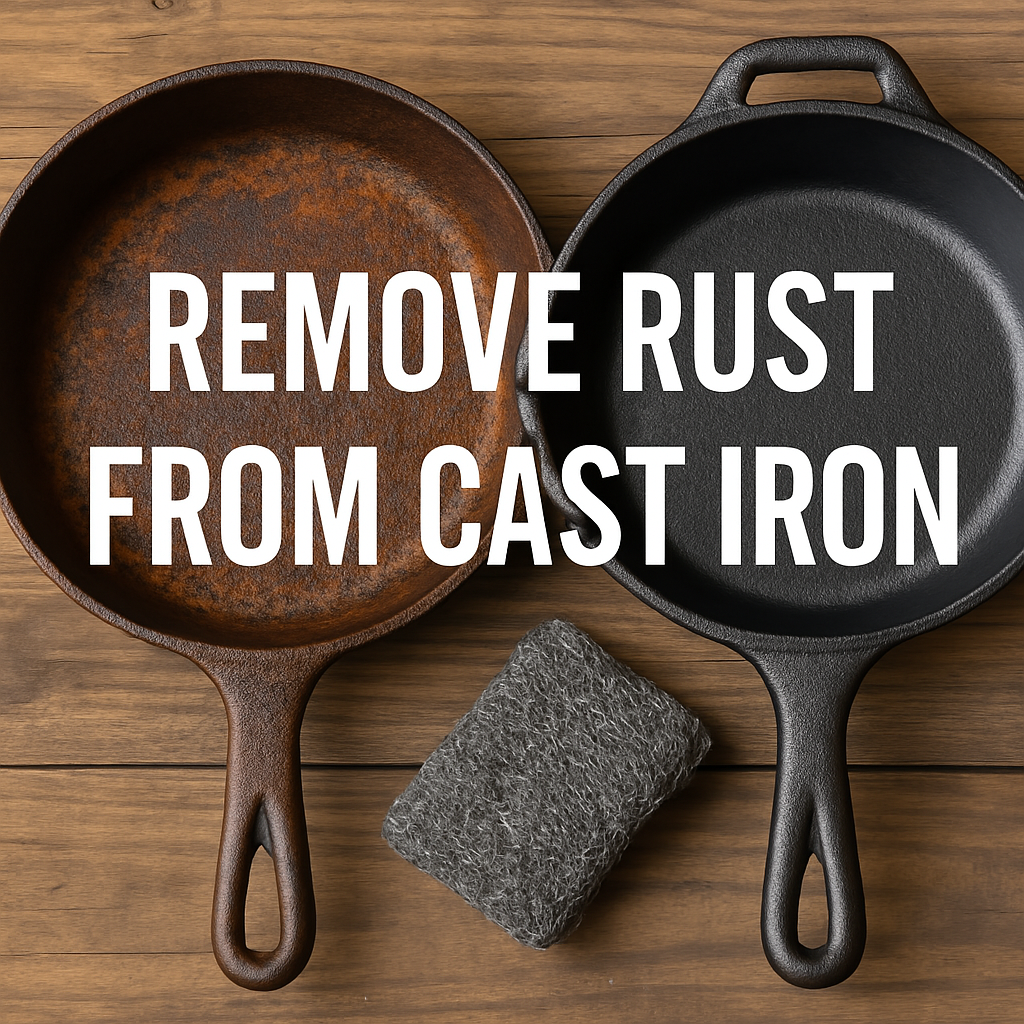

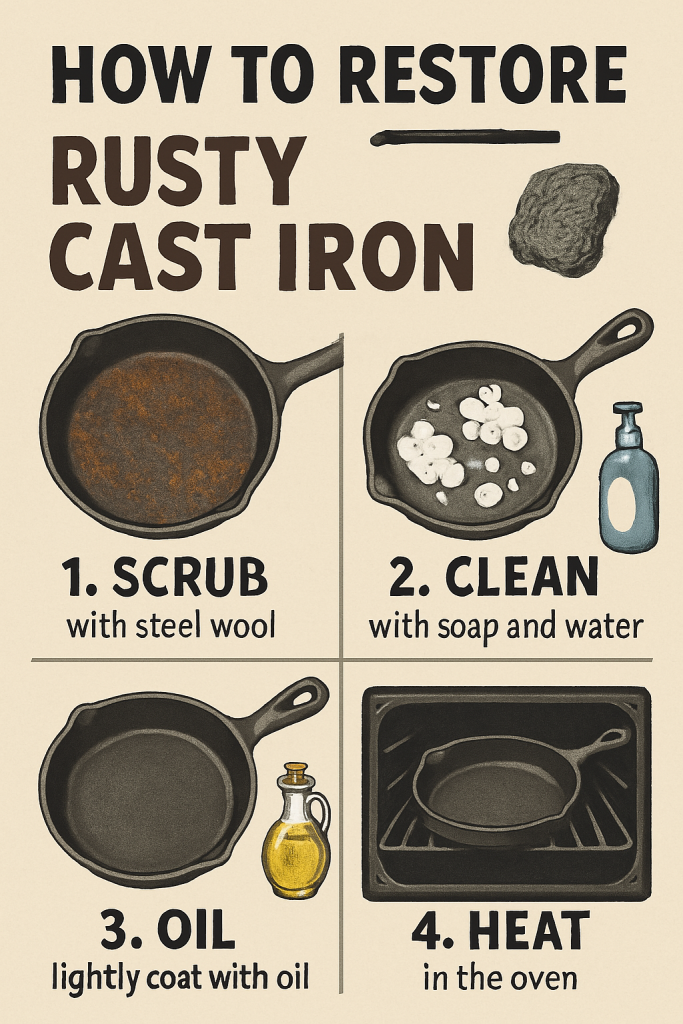
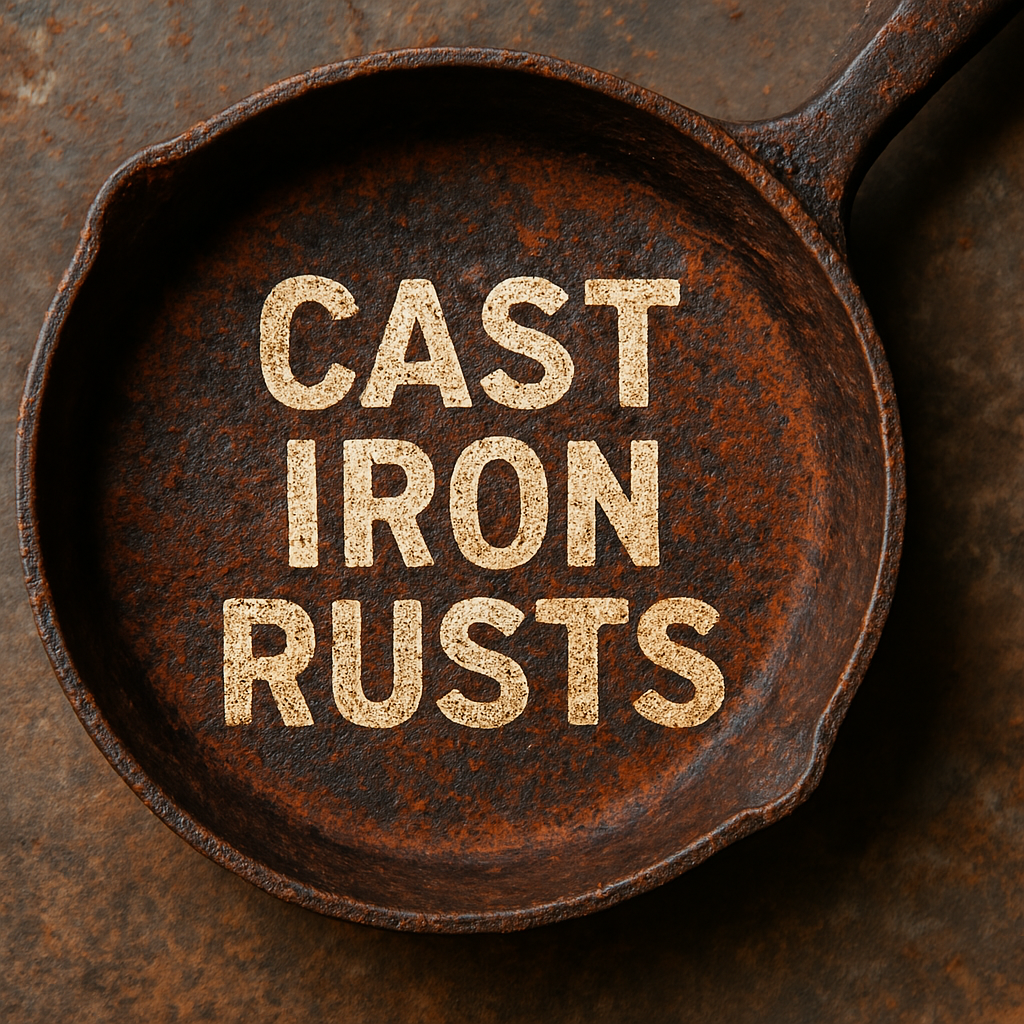
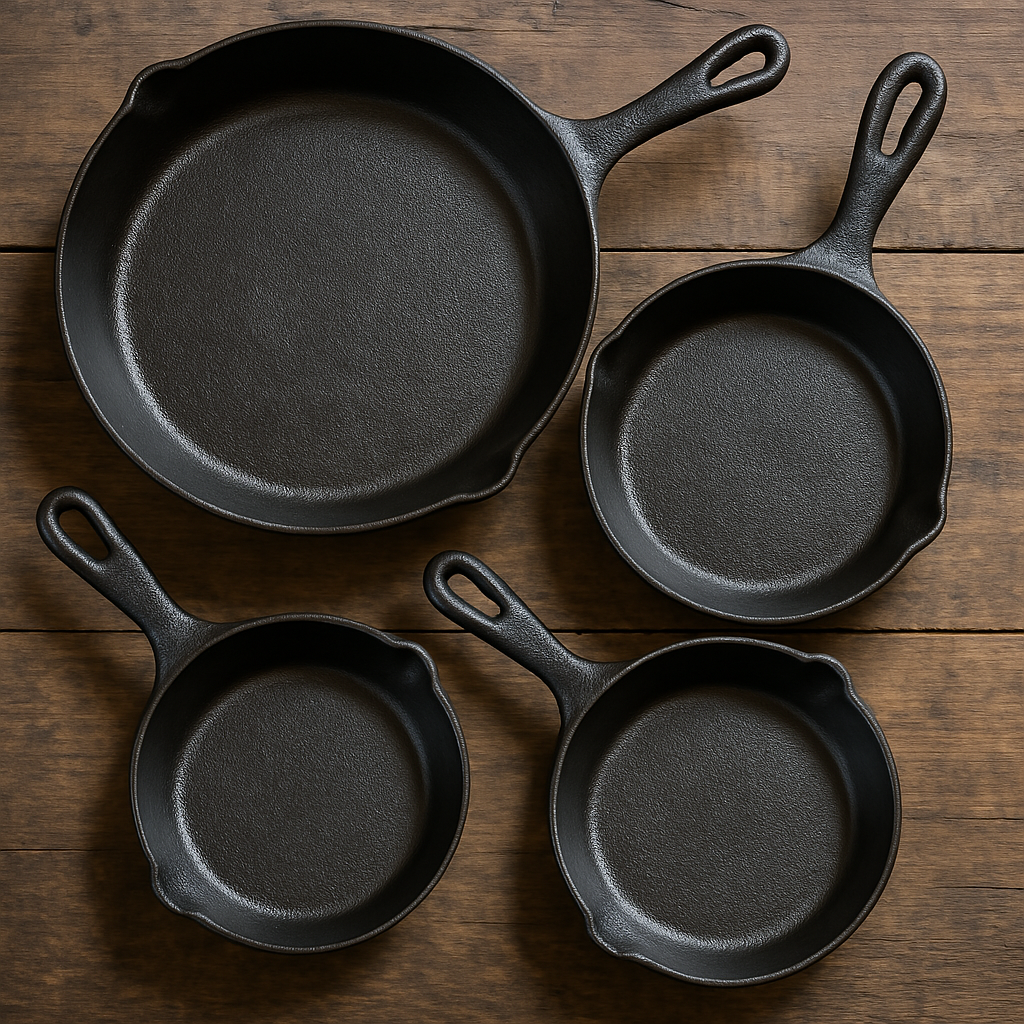
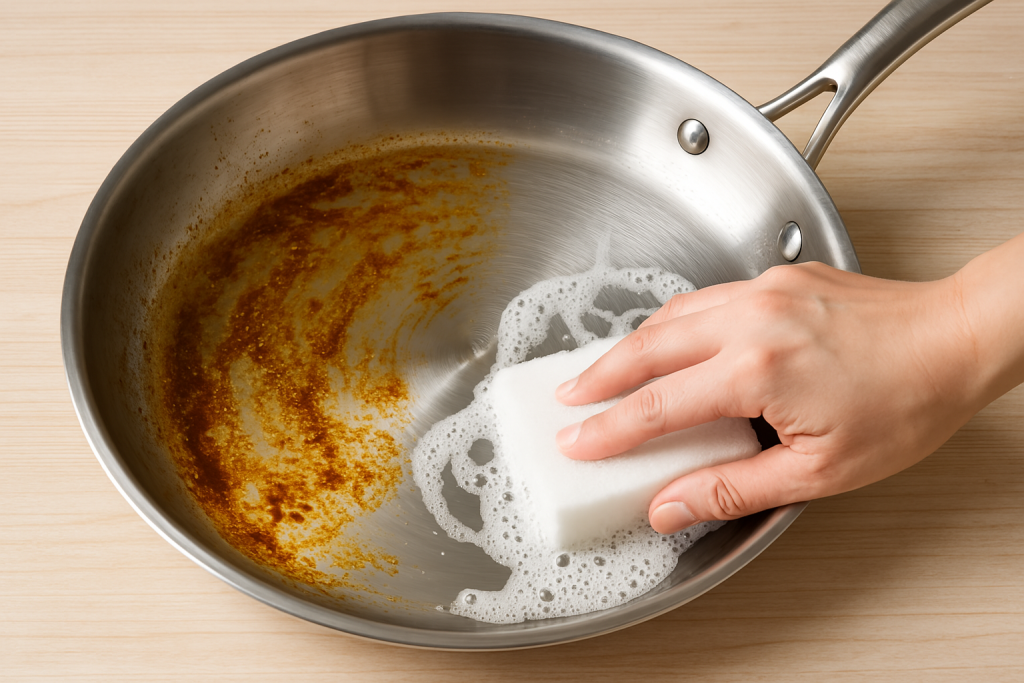
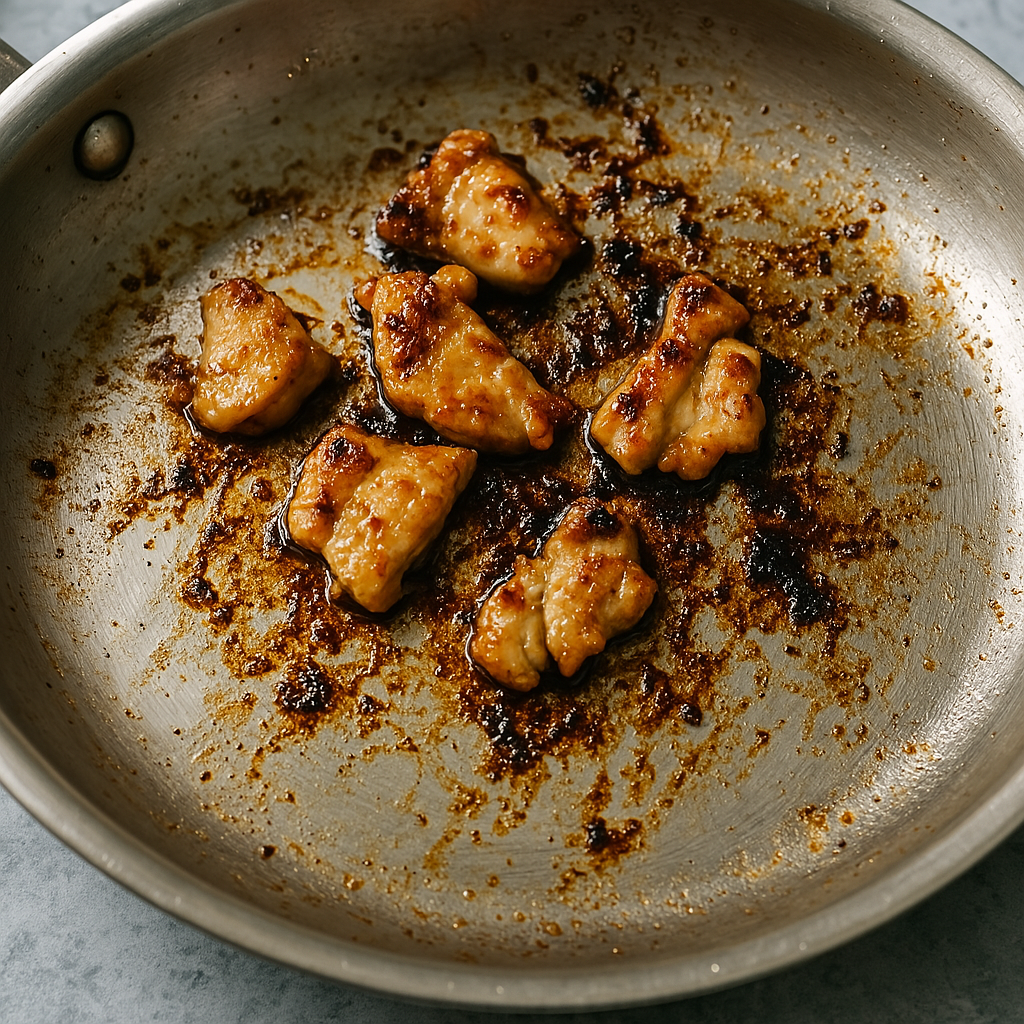
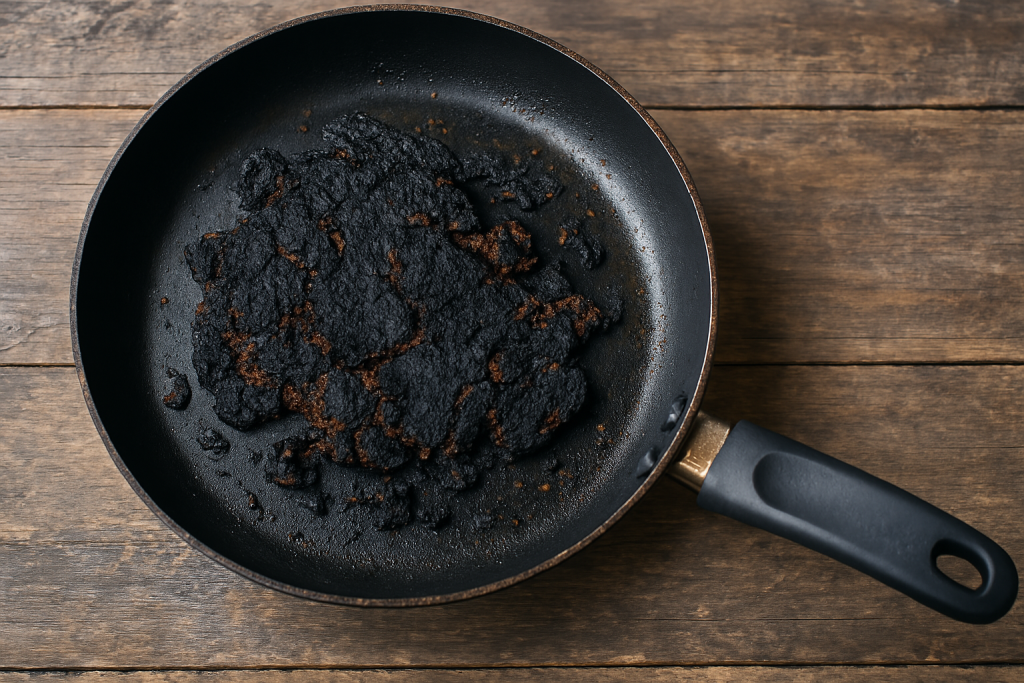
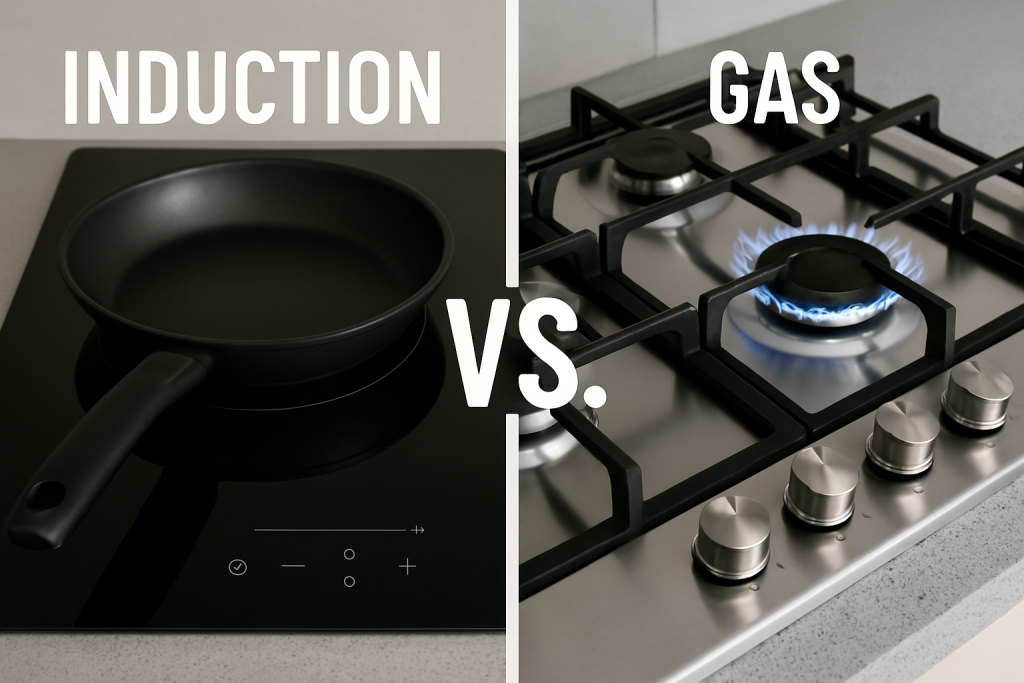
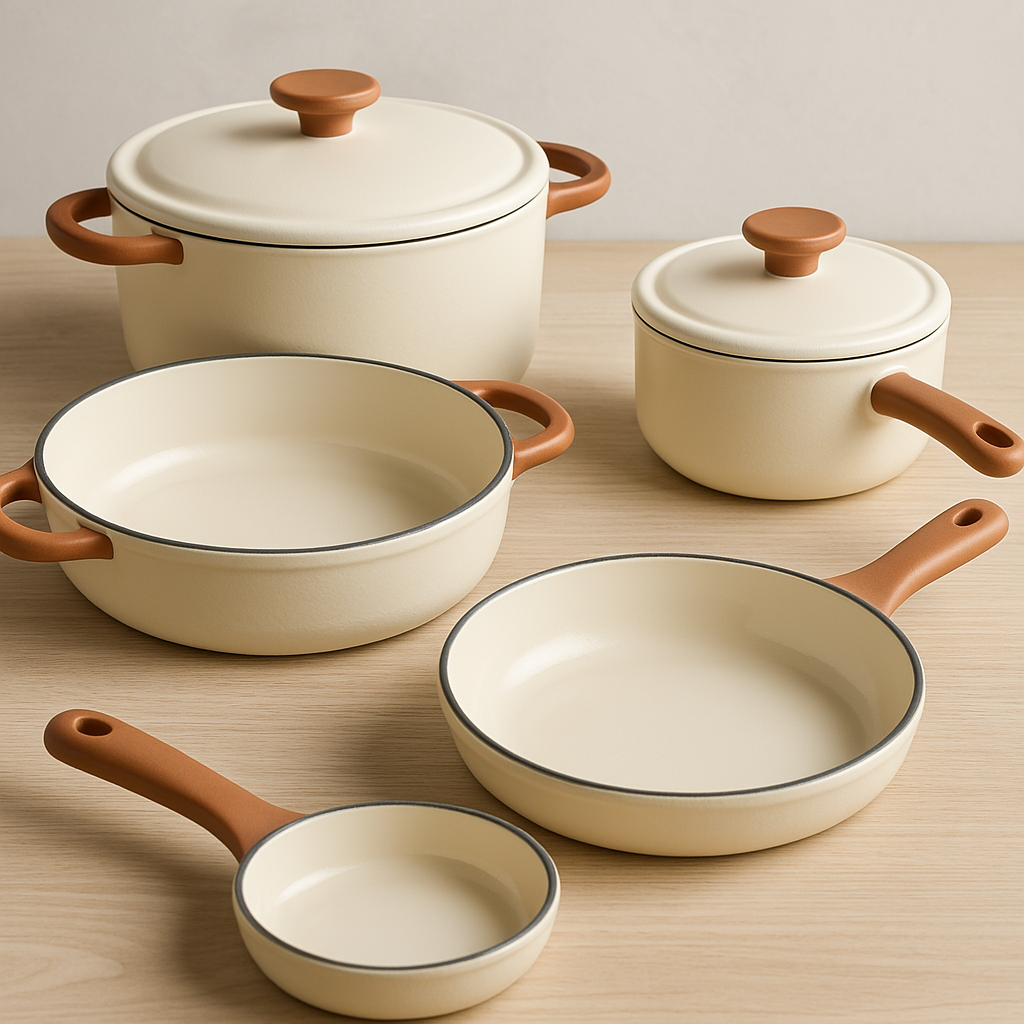
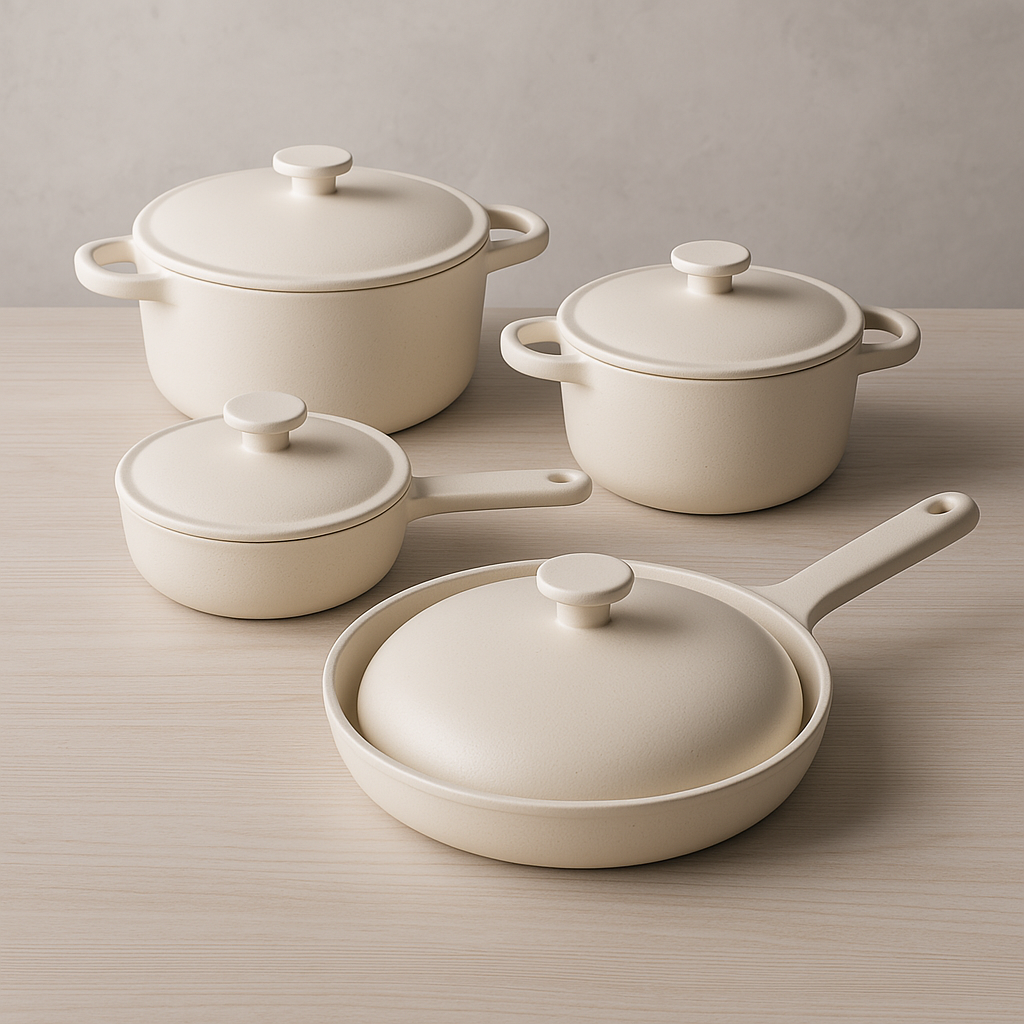
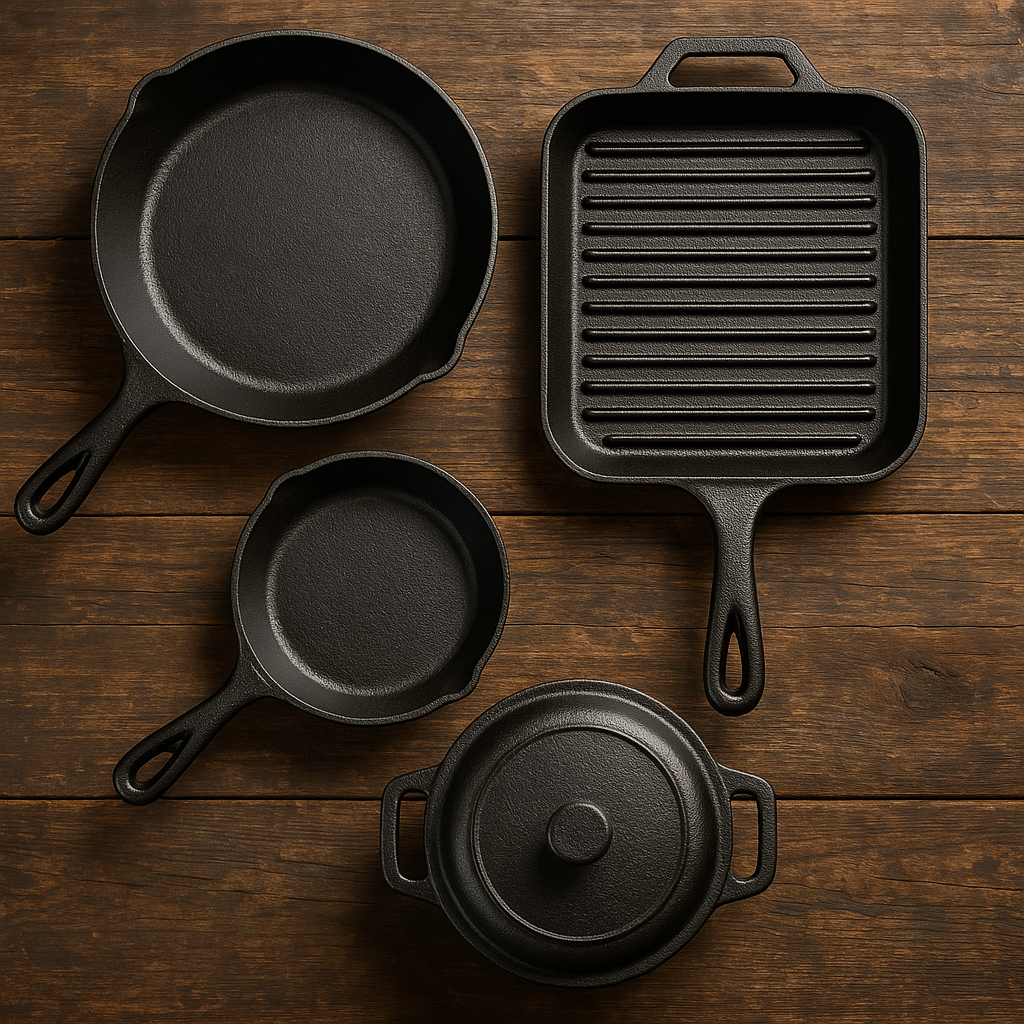
Leave a Reply